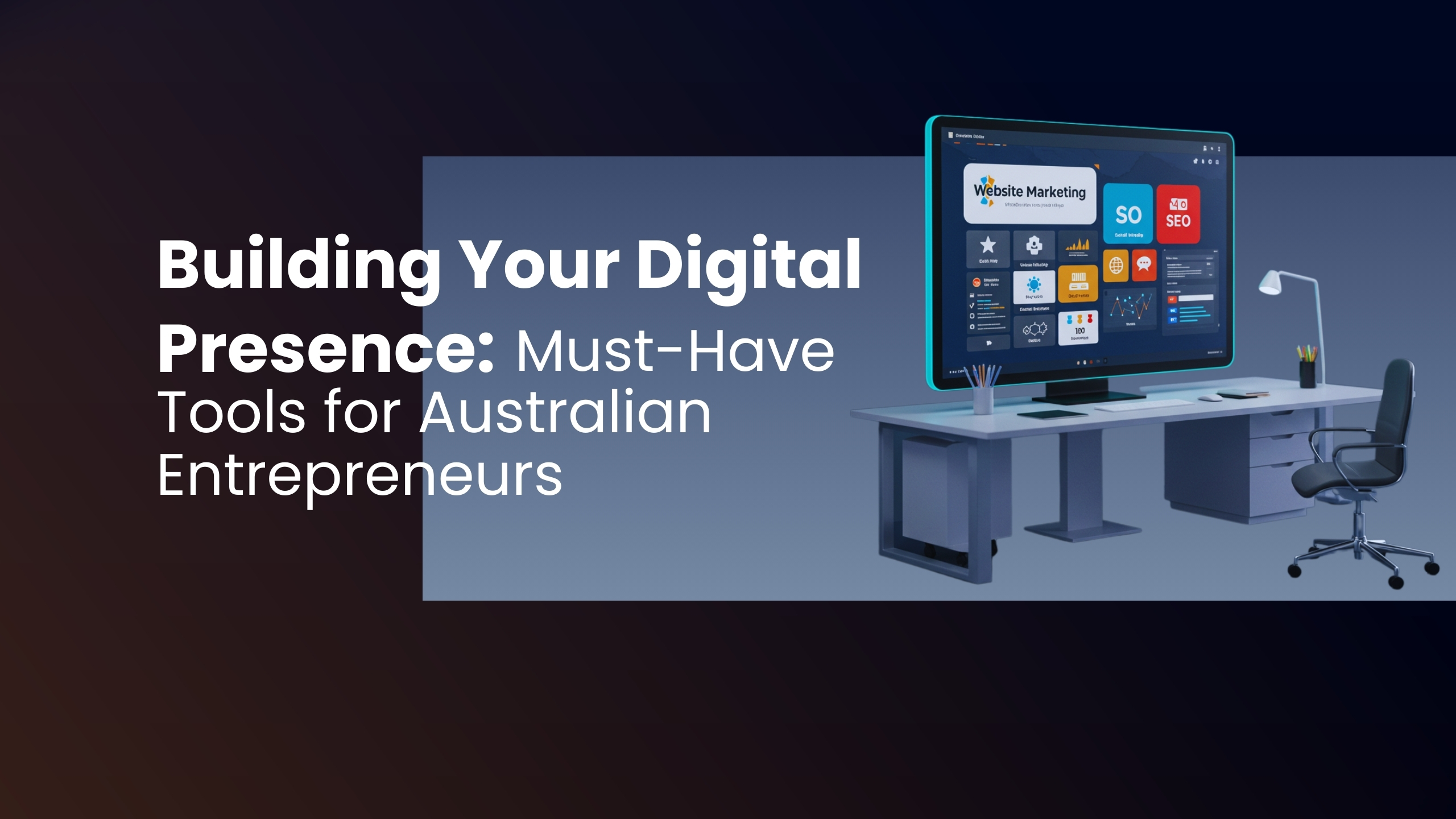Building Your Digital Presence: Must-Have Tools for Australian Entrepreneurs
In today’s digital age, a strong online presence is vital for Australian entrepreneurs. Whether you’re launching a startup or scaling an existing business, the right digital tools can help you create a professional website, engage customers on social media, and optimize your marketing strategy. In this guide, we combine verified strategies, real-world success stories, and interactive resources to show you how to build a digital presence that drives growth.
- Website Building Tools
Your website is the cornerstone of your digital presence. Consider these platforms:
a. WordPress: Offers high customizability for scalable solutions.
b. Wix or Squarespace: Ideal for startups seeking quick, visually appealing sites.
c. Shopify: Best for those with a strong e‑commerce focus.
Real-World Success Story:
A Sydney-based startup revamped its website using WordPress. After implementing a modern design and mobile‑friendly interface, their visitor engagement increased by 30%, and lead conversion rates improved significantly.
Actionable Tip:
Test different platforms using free trials to see which best suits your business needs and budget.
- Social Media Management Tools
An effective social media strategy is essential for engaging your audience.
a. Hootsuite or Buffer: These platforms allow you to schedule and manage posts across Facebook, Instagram, LinkedIn, and more.
b. Canva: Use it to design compelling visuals and consistent branding assets.
Expert Insight:
A digital marketing expert from StartupAus emphasizes,
“Consistent and well-planned social media engagement is key to building brand loyalty. The right tools can save you time and drive measurable results.”
Actionable Tip:
Create a content calendar using these tools to ensure regular and targeted posting.
- SEO and Analytics Tools
Driving organic traffic starts with strong SEO.
a. Google Analytics & Search Console: Track your website’s performance and uncover areas for improvement.
b. SEMrush or Ahrefs: Use these for comprehensive keyword research and competitor analysis.
Latest Trend:
Recent studies show that local SEO is increasingly critical for Australian businesses—optimizing for local search terms can significantly improve your visibility among nearby customers.
Actionable Tip:
Review your site’s performance data monthly and adjust your SEO strategy to respond to changing trends.
- Content Creation and Management
Quality content not only attracts visitors but also builds credibility.
a. Canva: Create professional-looking infographics, social media posts, and presentations.
b. WordPress Plugins (like Yoast SEO): Optimize your blog posts and website content for search engines.
Actionable Tip:
Set aside time weekly to create or curate content that aligns with your brand message and speaks directly to your target audience.
- Email Marketing Platforms
Email remains one of the most effective channels for customer engagement.
a. Mailchimp and Constant Contact: Automate campaigns, segment your audience, and track performance.
b. Sendinblue: Offers additional features like SMS marketing and advanced segmentation.
Real-World Example:
An Australian fashion retailer increased customer retention by 25% after launching a personalized email campaign using Mailchimp.
Actionable Tip:
Develop targeted email campaigns that nurture leads and convert prospects into loyal customers.
- Leveraging Interactive Learning and Support
Stay updated with the latest digital trends through interactive resources:
a. Webinars & Workshops: Australian organizations like StartupAus and business.gov.au offer free webinars on digital marketing and online branding.
b. Online Courses: Platforms like LinkedIn Learning and Coursera provide courses on website optimization, SEO, and social media management.
Expert Quote:
“Investing in continuous learning and utilizing digital tools can dramatically amplify your brand’s reach,” says a mentor from the Australian Entrepreneurs Network.
- Enhanced Visual Aids and Resource Links
Visual summaries help simplify complex strategies. Consider adding:
a. Infographics: A clean, minimalistic infographic summarizing the must‑have tools and strategies can serve as a quick reference guide.
b. Resource Links: Direct links to government resources like business.gov.au and local startup support programs like StartupAus offer additional, verified information.
Actionable Tip:
Bookmark these resources and refer to them regularly for updates on digital marketing trends in Australia.
Key Takeaways
a. Build a Professional Website: Use platforms like WordPress, Wix, or Shopify to create a solid online foundation.
b. Engage on Social Media: Plan and schedule posts using tools like Hootsuite and Buffer, and design visuals with Canva.
c. Optimize for SEO: Utilize Google Analytics, Search Console, and keyword research tools to drive organic traffic.
d. Create Quality Content: Consistent, high‑quality content builds trust and engages your audience.
e. Leverage Email Marketing: Automate campaigns to nurture leads and retain customers.
f. Invest in Learning: Attend webinars and online courses to stay current with digital trends.
g. Use Visual Aids: Infographics and downloadable templates enhance understanding and implementation.
h. Access Trusted Resources: Use government and local startup resources to validate your strategies.
Conclusion
For Australian entrepreneurs, building a robust digital presence is not just about having the right tools—it’s about integrating them into a cohesive strategy that resonates with your audience and drives growth. By leveraging proven website builders, social media management, SEO, content creation, and email marketing platforms, you can create a powerful online brand. Combine these tools with interactive learning, real-world success stories, and trusted resources to continuously refine your strategy.
FAQs
- Why is a digital presence important for Australian entrepreneurs?
It’s essential for brand building, customer engagement, and staying competitive in a digital-first market. - Which website builders are recommended for startups?
WordPress, Wix, Squarespace, and Shopify are popular options depending on your needs—WordPress for customization, and Wix or Squarespace for ease of use. - How can social media tools improve my online presence?
Tools like Hootsuite and Buffer allow you to schedule posts, manage multiple channels, and analyze engagement, ensuring consistent and effective communication. - What SEO tools should I use?
Google Analytics, Google Search Console, SEMrush, and Ahrefs are recommended for tracking performance and refining your SEO strategy. - How do I create engaging content?
Use tools like Canva to design visuals and plan your content calendar. Consistency and quality are key. - Where can I find additional resources?
Trusted resources include business.gov.au, StartupAus, and local digital marketing courses on LinkedIn Learning or Coursera.

